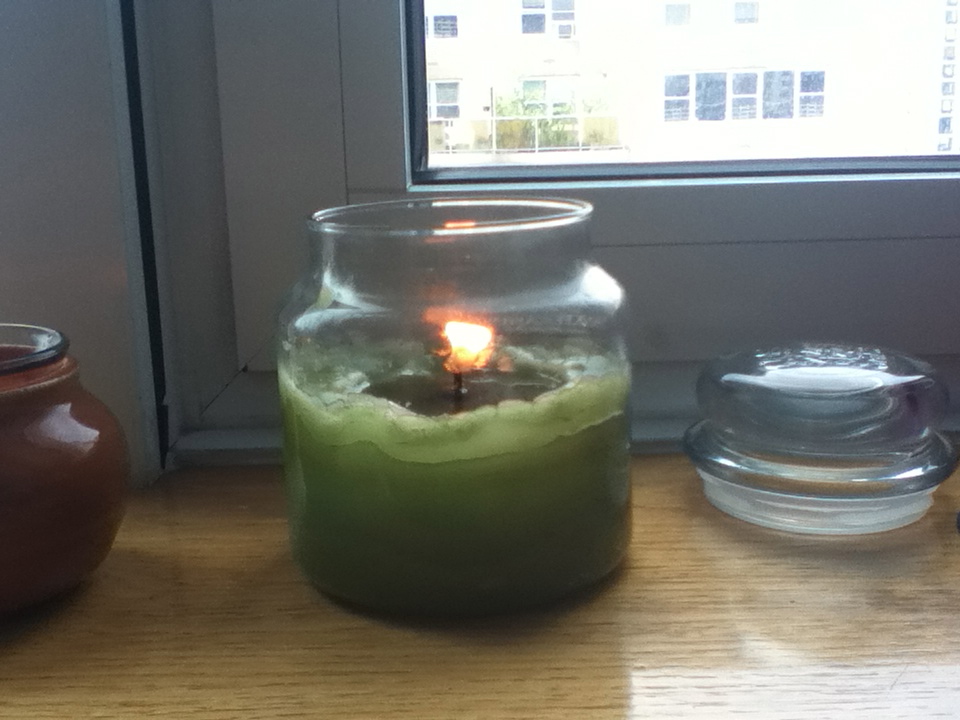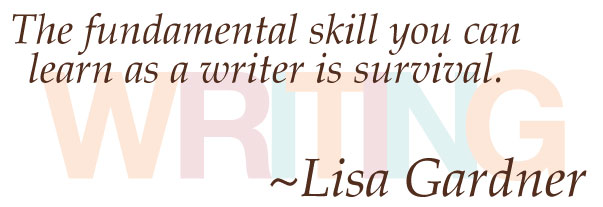In my final installment of ThrillerFest recaps and I thought I’d save one of my favorites for last. In her fabulous talk on Creative Consistency, Lisa Gardner shared three important steps that writers must take in order to get creative on demand.
Being able to get creative on demand is a crucial aspect of being a writer. Sometimes you have the luxury of taking the time to brainstorm ideas or sketch out different writing projects before diving into one. Most of the time, though, if you’re writing on a deadline, you have to be able to turn on your creativity like it’s a faucet. Why? Because most of us have other responsibilities in our lives that often interfere with our writing time. This means we must make the most of every minute we can steal away to do our writing.
And don’t think that getting published somehow magically makes all the extraneous stuff go away. Someday down the line, you may have the luxury of quitting that day job and writing all the time, but even then there’s a lot of publicity, marketing and promotion that ends up eating away at precious writing time. As Gardner says “The minute you publish, that job [writing] also expands.” You have to help promote your book, keep up your platform and social media presence, and you have to write the next one. “The fundamental skill you can learn as a writer is survival,” says Gardner.
And her three-step process to creative consistency can help you do just that.
Step 1: Recognize Your Process
Every writer is different. Some writers like to work in the quiet of an office, others prefer a table in a bustling cafe. Some writers are deadline-driven while others prefer the slow-and-steady approach. Some writers outline down to the smallest detail, others write as though from “out of the mist” as Gardner calls it. The idea is to recognize your process, understand what conditions help you do your best work and then use that information to keep yourself on track.
Step 2: Cognitive Tricks and Techniques
As a former psychology researcher, I loved that Gardner talked about the nitty-gritty psychology behind writing a book. It’s all about teaching your brain to associate writing with a positive experience and training your brain to lock into “writing mode” quickly so that you don’t waste time getting into “the zone.” In terms of positive association, it’s important to celebrate any forward momentum in your writing process and reward yourself for writing, no matter how little or how much you actually accomplish.
“Any day you write is a good day”
~Lisa Gardner
And let’s not forget Pavlovian responses. You can use classical conditioning to teach your brain to snap into that “writing mode” quickly. Pavlovian responses refer to the experiment by a scientist named Pavlov who rang a dinner bell before feeding his dogs. The dogs began to associate the bell with food so that when Pavlov rang the bell, they would salivate even if there was no food. Unlike the positive associations that work on a conscious level (i.e. you’re consciously associating writing with a positive experience), Pavlovian responses work on an unconscious level. After all, the dogs can’t consciously make themselves salivate; it’s a reflex-like response that occurs in response to food. But by pairing food with the bell, Pavlov was able to elicit that automatic response on demand.
You can do the same thing with writing. Choose a sensory input. It can be a scent, musical playlist, a candy you munch on while writing. For two weeks, pair that sensory input with your writing time. For instance, if you’re using a scented candle, light that candle every time you’re going to sit down to work, then work diligently while the candle is lit. Blow it out when you’re done. Do that for two weeks and by the end of that time, whenever you light that candle with that specific scent, you’ll find that your brain will automatically get into “writing mode.”
 To test this theory, I decided to try it out myself. I went out and got a scented candle and since ThrillerFest, every time I sit down to write in my office, I light it. As you can see from the picture, the candle has already melted down quite a bit from so much use. What I’ve found is that now, whenever I light the candle my brain immediately locks into work-mode and the words start flowing.
To test this theory, I decided to try it out myself. I went out and got a scented candle and since ThrillerFest, every time I sit down to write in my office, I light it. As you can see from the picture, the candle has already melted down quite a bit from so much use. What I’ve found is that now, whenever I light the candle my brain immediately locks into work-mode and the words start flowing.
I used a scented candle because smell is a very powerful sense for me. But you can do this with just about any sensory input (music is another great way to get your brain into “the zone”). The key thing is you want your brain to associate that sensory input with writing and only writing in order for it to work. This means you must:
- Use that sensory input (in my case the candle) every time you sit down to write,
- and NOT use it with any other activity (i.e. don’t listen to your writing playlist while you’re at the gym unless you’re able to write and exercise at the same time.)
I have no idea whether this an actual Pavlovian response or whether the candle just had a placebo effect on me. (Placebo Effect means I believe the candle works, and that belief makes it actually have an effect.) But in the end, does it really matter? All I know is that when I light that candle, my brain gets down to business and writing becomes easier. Who cares if it’s a Pavlovian response or a placebo effect, just as long as it works, right?
Step 3: Quick Boosts of Inspiration
Aside from teaching your brain to be creative, there are also little things that can help you “find your muse.” Exercise can help clear your mind or let you mull over ideas before sitting down to work. Automatic or “mindless” tasks, like showering, driving, washing dishes, folding laundry… all of these are opportunities for letting ideas percolate. Books, music and movies are another great source of inspiration. I read just about every night, even if it’s only a few pages. I also watch a diverse selection of movies and TV shows.
You can find writing inspiration just about anywhere, so don’t be afraid of those “guilty pleasure” books, shows or movies. For instance, lately I’ve been really interested in watching reality shows and picking apart how the editing functions to tell a “story” that has a beginning, middle and end. Reality itself doesn’t have much story structure, so reality shows have to cut footage in a specific way to add drama and shape the plot. I love speculating about what “characters” or “plot points” ended up on the cutting room floor in order to create a coherent, unified episode.
It’s important that every so often in your writing process, you take some time to restock your idea storeroom and preserve those voices or stories that come to you in unlikely hours. Whether that’s with a voice recorder, or with a notebook you carry in your pocket, you need to keep track of those inspirational tidbits so that you have them ready and waiting when you need them.
Now I want to know, what steps are YOU going to take to enable your own creative process?







